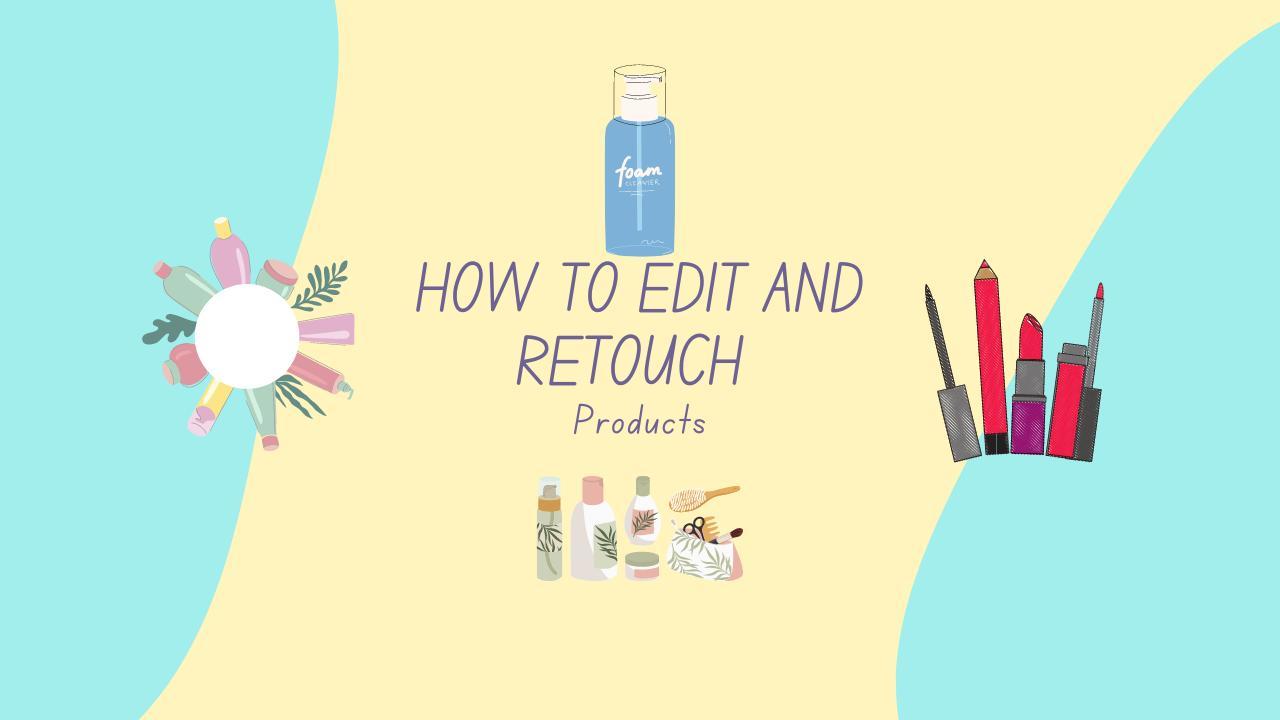Beauty product photos play a crucial role in attracting potential customers and creating a positive brand image. Editing and retouching these photos can significantly enhance their visual appeal, correct imperfections, and create a consistent and enticing brand identity. In this article, we will guide you through the process of editing and retouching beauty product photos, ensuring professional and captivating results.
Importance of Editing and Retouching Beauty Product Photos
Editing and retouching beauty product photos go beyond just adjusting the lighting or removing minor imperfections. It allows you to create stunning visuals that engage customers and showcase your products in the best possible way. Here are some reasons why editing and retouching beauty product photos are essential:
- Enhancing visual appeal: Through editing and retouching, you can improve the overall aesthetics of your beauty product photos. By adjusting colors, contrasts, and sharpness, you can make the images more vibrant and eye-catching.
- Correcting imperfections and flaws: Beauty product photos often require minor adjustments to remove blemishes, spots, or any other imperfections that might distract the viewer. Editing tools enable you to retouch these flaws and present your products flawlessly.
- Creating a consistent brand image: Consistency is key in branding. Editing and retouching your beauty product photos ensure that your images align with your brand's style and convey a cohesive message. This consistency strengthens your brand identity and helps customers recognize your products easily.
Steps to Edit and Retouch Beauty Product Photos
To edit and retouch beauty product photos effectively, follow these step-by-step instructions:
- Preparing the workspace and tools Before diving into the editing process, ensure that you have a clean and organized workspace. Open your preferred photo editing software and have all the necessary tools at your disposal, such as the healing brush, adjustment layers, and cropping tool.
- Adjusting brightness, contrast, and exposure Start by adjusting the overall brightness, contrast, and exposure of the image. This step helps in bringing out the essential details and making the photo visually appealing. Use adjustment layers or sliders to fine-tune these aspects.
- Removing blemishes and imperfections Carefully examine the image for any blemishes, spots, or unwanted elements. Utilize the healing brush or clone stamp tool to remove these imperfections while preserving the natural appearance of the product. Pay attention to details to achieve a flawless result.
- Enhancing colors and vibrancy Colors play a significant role in beauty product photos. Adjust the saturation, vibrancy, and color balance to make the colors pop without appearing unnatural. Be cautious not to overdo it; maintaining a natural and appealing look is crucial.
- Resizing and cropping images Consider the platform or medium where your beauty product photos will be displayed. Resize and crop the images accordingly to ensure they fit the required dimensions. This step also allows you to focus on the most important aspects of the product.
- Applying filters and effects Experiment with filters and effects to add a touch of creativity and uniqueness to your beauty product photos. However, exercise restraint and ensure that these enhancements complement the product rather than overshadow it.
- Adding logos and branding elements Include your brand's logo and other relevant branding elements on the photo. Place them strategically to maintain a professional appearance and reinforce your brand identity.
- Finalizing the image Review the edited image and make any final adjustments if needed. Ensure that the photo represents your product accurately and aligns with your brand's aesthetics. Save the image in the appropriate file format and resolution for its intended use.
Best Practices for Editing and Retouching Beauty Product Photos
To achieve the best results when editing and retouching beauty product photos, consider the following best practices:
- Maintaining natural appearance: While editing, strive to maintain the natural appearance of the product. Over-retouching or altering the image excessively can lead to unrealistic and unappealing results.
- Paying attention to detail: Beauty product photos require meticulous attention to detail. Zoom in and scrutinize the image carefully to ensure every imperfection is addressed, and the product looks impeccable.
- Consistency across product lines: If you have a range of beauty products, ensure consistency in your editing style across all the product photos. This helps customers recognize your brand and builds trust in your products.
- Using high-quality software and tools: Invest in professional photo editing software and utilize high-quality tools. These tools offer advanced features and options, allowing you to achieve precise and polished results.
- Regularly updating product images: Keep your product images up to date with the latest offerings. Replace outdated photos with fresh ones to maintain customer interest and showcase your current product line.
Conclusion
Editing and retouching beauty product photos play a vital role in enhancing their visual appeal, correcting imperfections, and creating a consistent brand image. By following the outlined steps and best practices, you can achieve professional and captivating results. Remember to maintain the natural appearance of the product, pay attention to detail, and regularly update your product images to stay ahead in the competitive beauty industry.
